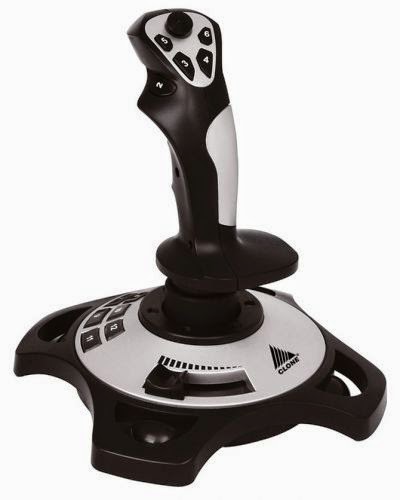“Game Art is a fast moving industry and it is necessary to
be able to work quickly, effectively and as part of a team. This project should
give you the opportunity to understand what your chosen specialism would be
like. Together we will be working towards a large goal (Game), this will have
separate elements (Levels) and these levels should have individual content that
you can put towards your portfolio.
This project has elements that will allow concept artists,
character artists, environment artists and engine artists to develop their
skills, and hopefully allow you as a year group to create something larger and
more impressive. “
The job role I was assigned was Environment artist, and I was part of the Cold team. We were tasked with creating a “cold” level, which would sync with the other levels throughout this project. The style and feel would need to feel consistent within every level, so we needed to make sure that we worked in collaboration with all of the other teams.
We started by first making mood boards and working out what’s cold, but not too cliché. While we sorted the first stages of concepting, we also tried to organise a time scale and looked into making an asset list based off our most probable ideas. We looked at what objects we would need and them what others may be good to add as a stretch goal. We each looked an individual idea each and produced concepts based on that. I began to concept some icy caves and underground tunnels; we had a layout and because of this we started to work out areas of the level to fit the “shape” of our level and to show a progression through the terrain. We eventually went along a quite classic idea of cold, with ice and snow. We decided the best route to go, was to make out level similar to a Nepalese mountain range with traverses past or through a religious artefact and deep into some icy caves towards the scary level.
The job role I was assigned was Environment artist, and I was part of the Cold team. We were tasked with creating a “cold” level, which would sync with the other levels throughout this project. The style and feel would need to feel consistent within every level, so we needed to make sure that we worked in collaboration with all of the other teams.
We started by first making mood boards and working out what’s cold, but not too cliché. While we sorted the first stages of concepting, we also tried to organise a time scale and looked into making an asset list based off our most probable ideas. We looked at what objects we would need and them what others may be good to add as a stretch goal. We each looked an individual idea each and produced concepts based on that. I began to concept some icy caves and underground tunnels; we had a layout and because of this we started to work out areas of the level to fit the “shape” of our level and to show a progression through the terrain. We eventually went along a quite classic idea of cold, with ice and snow. We decided the best route to go, was to make out level similar to a Nepalese mountain range with traverses past or through a religious artefact and deep into some icy caves towards the scary level.
| Cave Concepts and Style Progression |
During our concepting stage, we all as a group found it
difficult to pinpoint a specific style for our project. I decided to produce
some style progression boards to help us pinpoint the exact style we were
looking for. Eventually as a group we decided we wanted a style very similar to
that of the Trine games; this meant
that the shapes of our models were stylised, but the materials were realistic.
Once we were settled on an idea as a group, we mapped out a
potential route around the level and how we could traverse it and use all the
space possible. We then assigned different world assets to each of us in the
group to produce. I was given the task of producing the statue hero asset, bell
tower and other smaller bits; as well as tweaking.
 |
| Early Level Layout |
We made the whitebox of the level to start with, and updated
the models over time. I sculpted the statue and some of the stone damage on the
bell tower using Zbrush. I found it quite tricky sculpting parts of the statue
due to the lack of skill using Zbrush and modelling organic objects. However, I
managed to reproduce our concept quite accurately in my opinion. I had some
trouble baking some of the normal down from my high poly sculpt, but I soon
resolved these and managed to get a decent Normal map which really pushed the
detail with the materials. The materials were quite simple to produce, with
PBR, it is quicker to texture and gives a much better result, so I was quite
pleased with the outcome of my assets.
 |
| Final Statue Concept |
Being a cold level involving ice and snow, we obviously had
to work out a way to coat our assets with snow. Dom found a way of simulating
snow falling in a scene in 3dsmax, this produced a layer of snow as a separate mesh.
This was used to give a sense of thick snow. However the rest of the snow was added
using vertex painting within Unreal Engine 4. Once Dom had applied it, I worked
on improving the mask used in the material to make it look a little more
convincing as real snow and not fake spray-on snow.
I think the Cold team produced a convincingly cold level. We
produced some nice concepts and assets and managed to get it functioning as a
level how we wanted it to within the six week restriction. However, we did come
across problems which hindered and slowed our progress. As a group of 4, one
concept artist and 3 environment artists, it’s not surprising that some of our
ideas conflicted and that compromises had to be made. But the problem I found
was that at times, someone would start to work on something they hadn’t
informed the rest of us about. This meant that there were occasions where
things were almost produced twice, or something had already been completed and
forgotten about. If I could change this, I would have liked more communication
between the lot of us, so that the pipeline process was more fluent.
Overall the project was a good test for the year group as a
whole to work as a production sized group and to produce a decent looking, four
level side scroller. There were highs and lows, but I think many of us produced
portfolio worthy pieces and learnt a lot about the software we use, themselves
and each other. Hopefully this will help us work in collaboration during our
Final Major Projects.


















